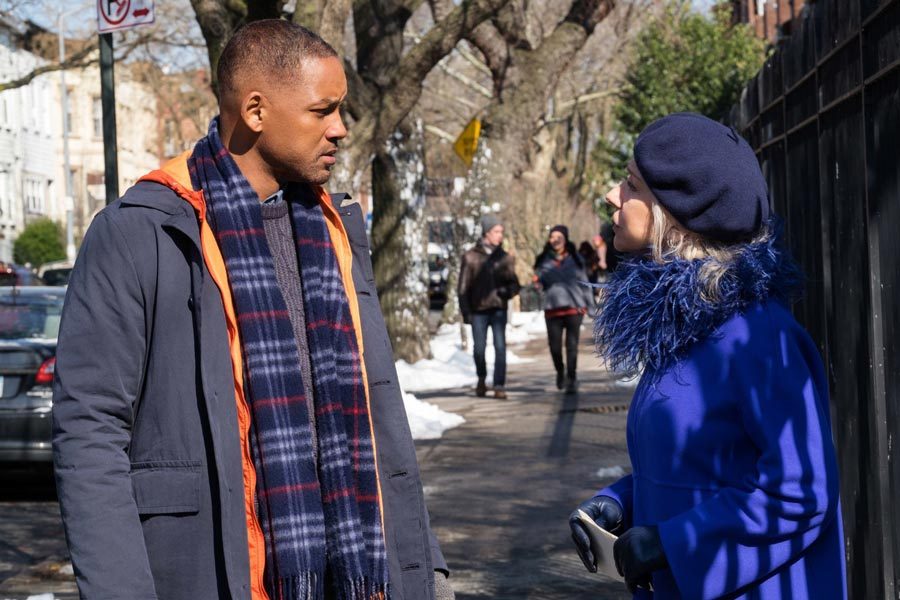Collateral damage
“Collateral Beauty” doesn’t live up to expectations
Photo by IMDb
Howard Inlet (Will Smith) speaks to “Death” (Helen Mirren) when she confronts him in the wake of his daughter’s death.
January 30, 2017
“Collateral Beauty” was meant to take the world by storm. With its promising trailers and all-star cast, many people felt that it would be a hit. Instead, it collapsed–hard.
The plot centers around advertising executive Howard Inlet, who has become clinically depressed and suicidal after the death of his 6-year-old daughter several years ago. Howard is the brains of his company and it cannot survive without him, but his strange behavior and lack of work has cost them several high-profile clients. His business partner needs to sell the company in order to stay afloat. However, Inlet is a major shareholder, so they cannot sell the company without proving that he is mentally unfit to run it.
The first problem with “Collateral Beauty” was its misleading trailers. I expected that Howard was actually going to have conversations with anthropomorphised Love, Time and Death. Instead, he was confronted by a trio of actors that his friends/colleagues had hired in order to create evidence that he is unfit to make decisions on the company’s behalf. They hire a private investigator to follow him and get video evidence of his encounters with these actors, and then digitally erase the actors from the footage. Essentially, they gaslight him, and prove his unfitness based on a lie.
From a psychological standpoint, I seriously question the ethics of his friends’ methods. Howard is depressed and borderline suicidal; the last thing he needs is for his friends to make him believe that he’s hallucinating. Kudos to the writers for providing some backlash to their idea–Amy, played by Kiera Knightley, is one of the actresses and almost quits multiple times as she struggles to come to terms with what they’re actually doing to Howard. It would have been a lot worse if everyone was completely comfortable with it.
The second problem is the number of questions it posed, but the few it actually answered. From the start, it seems like the trailers were lying and nothing supernatural is actually happening. But in the very last frame, Howard is walking in Central Park and sees the three actors standing on the bridge above him. When he turns around, they’ve disappeared. Is Howard actually hallucinating? Are they really Love, Time and Death? I’m not really sure, mostly because this happened in the last two minutes of screen time and I had almost no time to process it.
Another question I had was the nature of Howard’s eventual turnaround. At the beginning, he spends all his time sitting in a dark, unfurnished apartment or making elaborate domino structures on company hours. He goes on furious, suicidal bike rides down the middle of busy roads and won’t speak to anyone; his business partner Claire, played by Kate Winslet, has to keep paying his rent because he refuses to answer the door for his landlord.
Yet when he is presented with the “evidence” of his insanity, he immediately turns around, makes rational decisions and seems to be back to his almost-normal self. To me, this seems like a rushed ending, especially since Howard has been in this state for several years.
My qualms with the movie were mostly tied to the storyline, but it did have some really good moments. Will Smith’s monologue on the subway was wonderful, and I liked the fact that each of Howard’s three friends had their own problems that Death, Time and Love helped them solve. But if you’re going to see this movie, wait for it to leave theaters; it’ll probably be a waste of a movie ticket.















